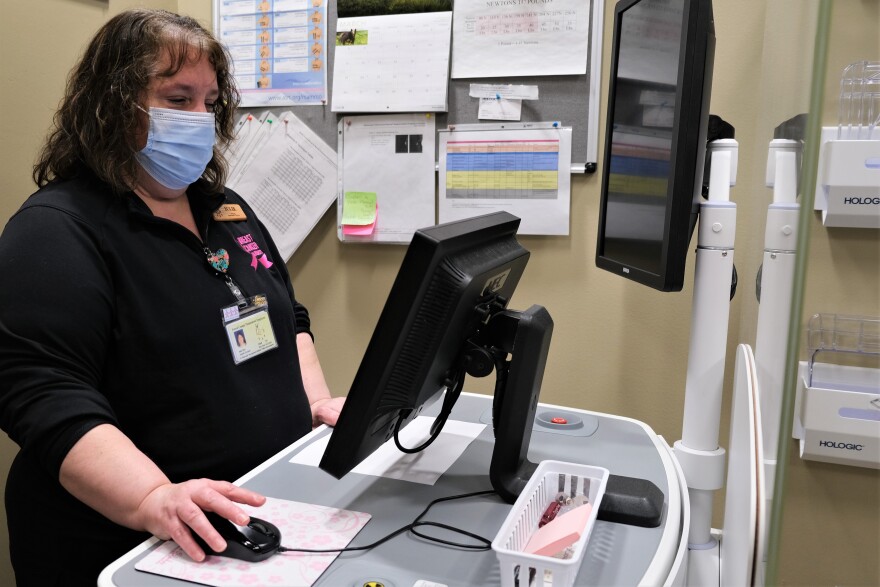It will be 40 years this summer that Julie Burt has worked in the medical imaging field.
More than 20 of those years have been working at the Forest County Potawatomi Community Health and Wellness Center.
She’s now the Director of imaging, lead mammographer, and lab interim supervisor.
“I’ve seen a lot of things,” Burt said with a laugh.
At the start of the pandemic, the number of patients coming in for their yearly mammograms dropped off significantly.
Now she says those numbers are coming back up.
“We’ve picked up pretty much to pre-pandemic numbers again which is awesome. We still have a few minor percentages that are still in fear of COVID,” said Burt.
Forest County Potawatomi Community Health and Wellness hasn’t been alone in this.
According to the CDC, breast cancer screenings dropped 87% in 2020. There was a 98% decline in screenings for Native American women.
That’s even more staggering when you take into account that Native American women are 13% less likely than non-Hispanic white women to get a mammogram to begin with, according to a study recently published in the American Journal of Preventative Medicine.

Burt says those statistics match with what she’s seen over the years.
“I’ve had the privilege of talking to several tribal women over the years to find out what’s stopped them initially from coming in to have their mammograms, other than the fear factor. Tribal women are very private. Having a mammogram interferes with their space,” she said.
The same recent study that found Native American women were 13% less likely to get a mammogram also found that the gap between them and non-Hispanic white women actually decreased between 2005 and 2019, but not because more Native American women were getting mammograms.
Overall, the number of women getting regular mammograms declined.
Burt says it’s the fear factor she’s found among all women that is the most likely reason they won’t get a mammogram.
“Fear of the unknown that it’s going to hurt. Fear that there’s going to be a cancer there right away. It’s fear of talking to someone who’s had a mammogram and maybe they had a very difficult time with their mammogram for whatever reason,” said Burt.
Yearly screenings can help catch any potential cancers early making them more likely to successfully treat it.
But getting Native American women breast cancer screening is only one barrier.
There are also statistics that Native American women have a 7% higher cancer rate and a 10% higher death rate from breast cancer as compared to non-Hispanic white women.
It’s all these factors combined that motivate Burt to make sure Native American women and anyone else who comes in for a mammogram are comfortable and relaxed.
She encourages anyone that’s hesitant to come in and talk about it.
“The last thing we would ever want to do is hurt a patient. That is not our goal. Our goal is to get the best mammogram possible and it takes both of us to do it,” said Burt. “I’ll think they’ll be pleasantly surprised that it’s not what grandma or mom would have said 10, 20 years ago. It’s a lot easier nowadays.”
Burt says it’s recommended to start mammogram screenings at the age of 40.
These are the guidelines the American Indian Cancer Foundation shares:
Screening Guidelines
- Women ages 40 to 44 have the option to start annual breast cancer screening
- Women ages 45 to 54 should have a mammogram once every year
- Women age 55 and older should switch to mammograms every two years or can continue with yearly screening
- Screening should continue as long as a woman is in good health and is expected to live at least 10 more years. Native women should always talk to a doctor or nurse right away if they notice any changes in their breast








